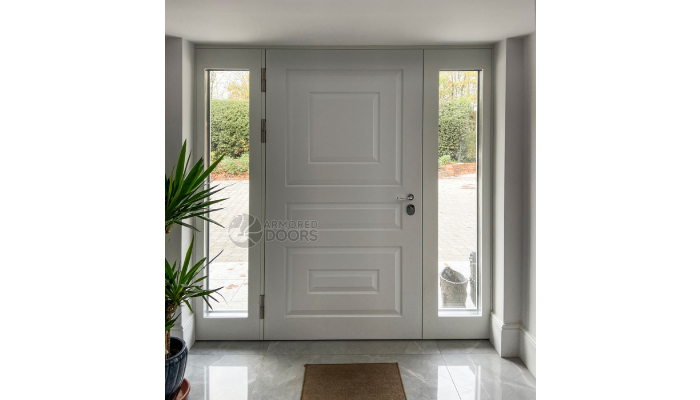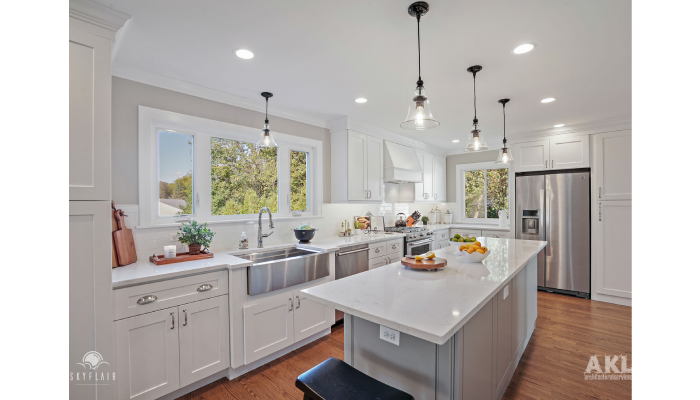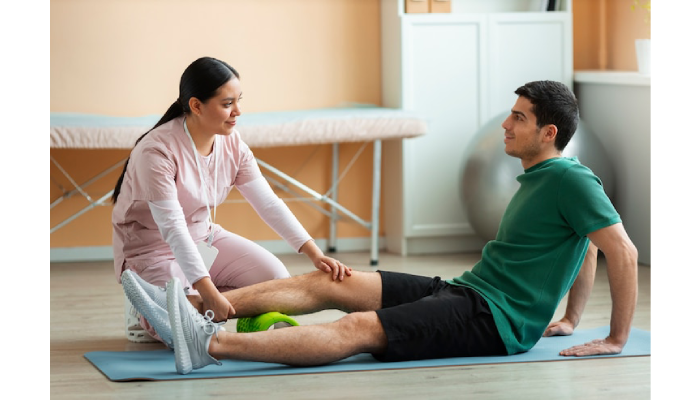Measuring for a custom security door is important because it guarantees the door fits snugly, which helps keep your home safe and secure. Start by gathering tools like a measuring tape, pencil, and paper, and consider having someone help for better accuracy. Measure the doorway width and height from both inside and outside, always using the smaller numbers to avoid problems during installation. Don’t forget to check the jamb depth and any nearby obstructions that could affect how the door works. Also, think about what style suits your property best before ordering. If you’re unsure at any step, consulting an expert is a smart move to ensure everything fits right.
Why Accurate Measurements Matter for Security Doors
Accurate measurements are essential when ordering a custom security doors because even small gaps can compromise your home’s safety. A door that doesn’t fit properly may leave openings intruders can exploit or cause issues like sticking and rattling during use. Proper sizing also supports the door’s structure, ensuring it remains durable over time without warping or weakening. When dimensions are exact, the door aligns perfectly with the frame and hardware, allowing locks to engage securely and operate smoothly. This precise fit helps the door seal against weather, pests, and drafts, contributing to energy efficiency and comfort. Incorrect measurements often lead to costly adjustments, delays, or returns, which can be avoided with careful measuring. Additionally, a well-fitted door maintains the visual harmony of your property by matching architectural features without awkward gaps or misalignment. Over time, a correctly sized door reduces wear caused by forced fits or gaps, supporting long-term security and reliable protection.
Tools You Need Before Measuring
Before measuring for a custom security door, it’s important to have the right tools on hand to ensure accuracy and ease. Start with a sturdy measuring tape that has clear markings in inches and feet, as precise measurements are key to a proper fit. Use a pencil or marker to jot down numbers directly on paper or a durable notepad, or opt for a digital device to organize your data efficiently. A level or straight edge helps check if the doorway or surrounding surfaces are uneven, which could affect the door’s fit. Having a helper can make the process smoother by holding tools or verifying measurements. A flashlight is useful to illuminate shadowed areas inside the door jamb, while a camera or smartphone lets you capture reference photos of the doorway and nearby features. If the space is tight or rough, protective gloves offer comfort and safety. For higher sections of the doorway, a step ladder ensures you can measure safely without stretching or risking injury. Finally, if the manufacturer provides measurement templates or guides, keep those handy as they offer valuable reference points tailored to the door model you plan to order.
How to Measure Doorway Width and Height?
Start by measuring the doorway width in three places: at the top, middle, and bottom of the opening. Always record the smallest width measurement, as door frames can vary slightly and using the smallest number ensures the door will fit comfortably without being too tight. Measure from the inside of one jamb to the inside of the opposite jamb for accuracy. For height, take measurements from the floor to the top frame on both sides and at the center, again noting the smallest height. This accounts for any uneven floors or frames. Speaking of floors, check that the surface where the door will rest is level, since an uneven floor can affect door fit and operation. Also, if your door frame has varying depth, measure the thickness needed so the door fits well within the frame. Don’t forget to note any unusual features like arches or angled tops, as these require special attention and may need custom door shapes. Finally, be sure to measure straight across, not at an angle, and check if any trim or molding adds to the overall width or height, since these details can impact your final measurement and the door’s fit.
Measuring Door Jamb Depth Correctly
To measure the door jamb depth accurately, start by measuring the distance from the front edge of the jamb to the back edge. Use a measuring tape and take measurements at multiple points along the jamb, top, middle, and bottom, to identify any inconsistencies. Always record the smallest depth measurement to ensure the security door frame will fit properly without being too tight. Check the jamb surface for any obstructions or protrusions, such as nails, screws, or weather stripping. Include the thickness of any weather seals or stripping in your depth measurement, as these affect how the door sits in the frame. Note if the jamb is flush with the wall or recessed, since this impacts installation and clearance. Consider whether the door will sit inside or outside the jamb; this will affect how much clearance you need. Using a straight edge can help confirm that the jamb edges are even and square, which is important for proper door fitting. Finally, document any damage, warping, or irregularities in the jamb, as these issues may require repair before installing your custom security door. For example, a warped jamb could cause the door to stick or not close properly, reducing security and function.
Identifying and Measuring Doorway Obstructions
Before measuring for a custom security door, it’s important to identify any obstructions around the doorway that might affect installation or operation. Look for common obstacles such as light switches, electrical outlets, and doorbells near the door frame. Measure the distance from each obstruction to the closest edge of the door frame to ensure there’s enough clearance. Also, check for vents, pipes, or wall protrusions that could interfere with the door or its frame. Security cameras or sensors nearby may need extra space to avoid blocking their view or function, so note their position and required clearance. Pay attention to steps or thresholds that might impact the door’s height clearance, and assess if overhangs or awnings limit the swing space of the door. Measure distances from the door frame to adjacent walls, furniture, or other fixed items that could obstruct the door’s movement. Don’t forget to identify any trim, molding, or decorative elements around the doorway, as these can affect the door’s fit and may need to be factored into your measurements. Lastly, check for uneven surfaces or wall damage close to the doorframe, which might require adjustments during installation. Record all measurements and obstruction details clearly and precisely to avoid conflicts during installation and ensure the custom security door fits and functions properly.
Choosing the Right Door Style and Design
Selecting the right style and design for your custom security door is key to balancing protection and curb appeal. Start by deciding between a single-panel or double-panel door based on the space available and how you want the door to open. For example, double-panel doors work well for wider openings but require enough clearance to swing open fully. Consider decorative elements like grills, patterns, or scrollwork to enhance your door’s look without compromising security. The material you choose, steel, aluminum, or wrought iron, should fit your security needs and the door’s design; steel is strong and durable, while wrought iron offers intricate designs and a classic aesthetic. Think about visibility and airflow too: mesh inserts provide ventilation and light while keeping insects out, whereas bars offer more privacy but less flow. Decide if a hinged or sliding door fits your doorway and daily use better, as this impacts both function and measurements. Don’t forget to check door thickness and weight to ensure compatibility with your frame and hardware, heavier doors need sturdy hinges and frames. Additional options like pet doors or mail slots can be added if needed, but consider how they affect security. Finally, look for manufacturers that offer custom designs to match unique architectural styles, so your security door complements your home’s exterior while providing the protection you need.
How Door Type Affects Your Measurements?
The type of door you choose plays a crucial role in how you take your measurements for a custom security door. Hinged doors require precise width and height to ensure the door swings freely without hitting the frame or nearby walls. You also need to note the direction of the door swing, whether it opens inward or outward, as this affects where the hinges will be placed. For sliding doors, accurate measurement of the track space along the adjacent wall is essential to guarantee smooth operation. The depth of the jamb must accommodate the track system, so measuring jamb depth carefully is important. Double doors are a bit more complex since you must measure each panel individually as well as the central meeting stile where the doors meet. Additionally, door thickness varies by type and impacts the frame size and hardware fit, so it must be measured carefully. Don’t forget to check clearance around the door for handles, locks, and security bars, which can differ depending on the door style. For sliding doors especially, sidewall clearance is key to avoid any obstructions during movement. Finally, the door type influences hardware choices like locks and hinges, so your measurements must support proper installation of these components to ensure your security door functions well and provides solid protection.
When to Get Professional Help
If your doorway is irregularly shaped or not perfectly square, it’s a good idea to consult a professional to ensure accurate measurements. Custom security doors can be heavy and complex, which means mistakes in measurement or installation could cause problems down the line. When you lack the proper tools or assistance to measure precisely, reaching out to an expert can save time and prevent costly errors. Also, if there are electrical outlets, vents, or structural obstacles near your doorway, professionals can carefully assess these challenges and plan accordingly. For custom designs that require exact cutouts or unique fittings, expert help is essential to meet precise specifications. Professionals not only measure but can also inspect the surrounding structure to confirm it can support the door’s weight and recommend the best door style and installation method for your specific needs. Consulting manufacturers directly can also provide valuable guidance on measurement standards and tolerances. Taking advantage of professional services helps avoid mistakes that lead to expensive reorders or modifications, ensuring your custom security door fits perfectly and functions smoothly from the start.
Tips for Recording and Double-Checking Measurements
Write down all measurements clearly and organize them by location, such as top width or jamb depth, right after taking them. Labeling each measurement helps avoid confusion later. Always measure each dimension at least twice to confirm accuracy, and if possible, have a helper independently verify the numbers. Taking photos of the doorway with measurement marks can provide a useful visual reference when reviewing your notes or discussing details with the manufacturer. Keep all your notes safe and easily accessible throughout the ordering and installation process. Make sure to convert all measurements to the same unit system, whether inches or centimeters, to avoid mix-ups. Before submitting your order, carefully review every measurement and highlight any unusual areas or spots that were hard to measure. Using measurement checklists or templates can help ensure you don’t miss any important dimensions. These steps reduce errors and help guarantee your custom security door fits perfectly.
Preparing for Installation After Measuring
Once you have accurate measurements that meet the manufacturer’s specifications, the next step is to prepare the installation area. Start by clearing the doorway of any furniture, rugs, or obstacles to provide a safe and accessible workspace. Inspect the door frame and surrounding walls carefully for any damage or rot that might affect the installation or the door’s long-term performance. If you’re replacing an old door, plan ahead for its disposal or recycling to avoid last-minute hassles. Organize all necessary tools and hardware before installation day to ensure a smooth process. Depending on the door type or complexity, professional installation may be required; if so, schedule it in advance and notify household members or neighbors about the timing to minimize disruption. Check local building codes or homeowners association rules to confirm there are no restrictions related to your security door installation. Make sure the workspace has adequate lighting to help with precise fitting and adjustments. Finally, be prepared for final steps such as sealing or minor adjustments after the door is installed to maximize security and function. Taking these preparation steps seriously helps avoid delays and ensures your custom security door fits perfectly and works as intended.

Mary Burns is a dedicated writer focusing on health and fitness topics. With a passion for promoting wellness and vitality, Mary shares her knowledge and expertise through engaging and informative blog posts.




